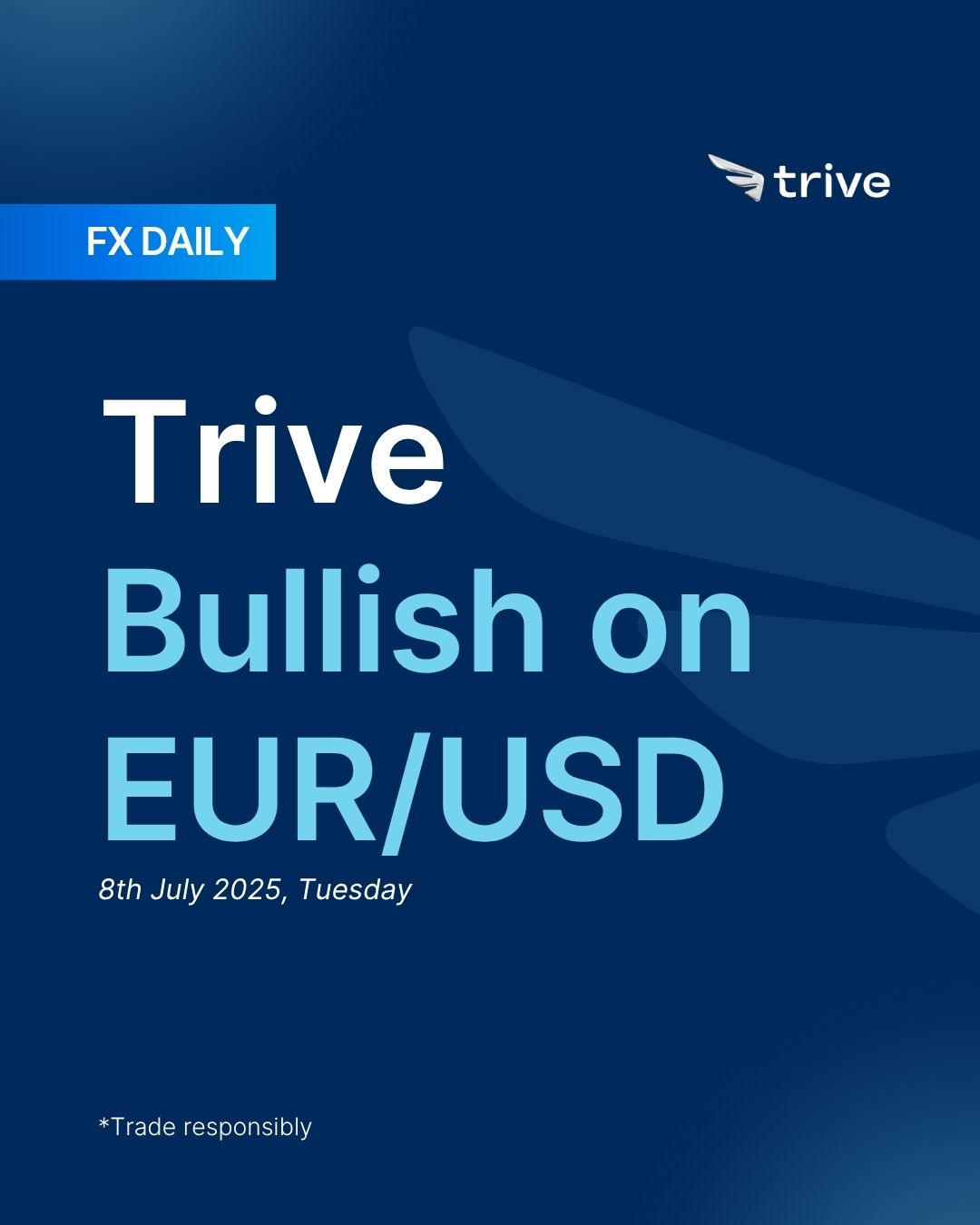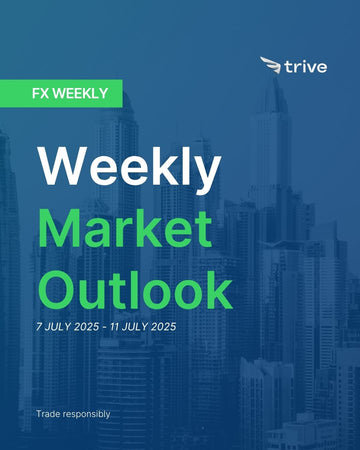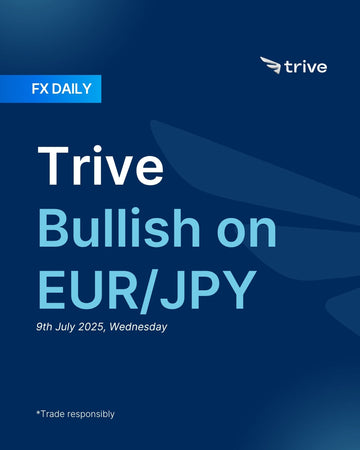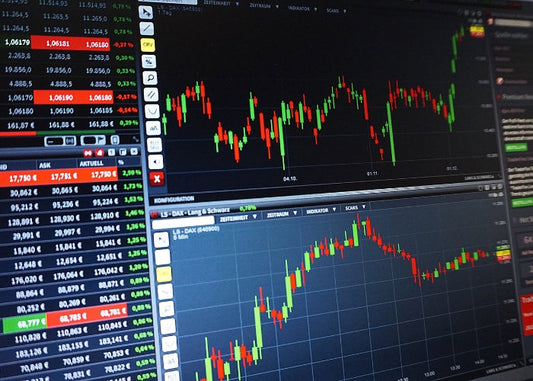FX Daily: Trive Bullish on EUR/USD

The euro remains supported on dips by stable inflation and modest growth, despite ECB pushback and strong US jobs data. The dollar rebounded on solid NFP but faces pressure from rising deficits, trade tensions, and low yields. Overall, EUR has a mildly bullish bias, while USD strength may be short-lived amid ongoing structural and political risks.
EUR: Buy in dips
Trade uncertainty also lingered in the background. With the US tariff deadline approaching on July 9th, markets watched for signs of progress in the ongoing US-EU trade talks. The EU indicated it was ready for a deal, particularly pushing for exemptions on autos and steel, but also stated it was prepared if no deal came through. European Commission President von der Leyen’s comments summed up the mood: open to agreement, but bracing for the possibility of escalation.
The euro has solid footing after June’s HICP inflation held right at the ECB’s 2% goal, giving policymakers little reason to rush into cuts and lending steady support to the currency. PMI readings stuck just above 50, which shows activity is stable and helps keep the euro from drifting lower. Even a strong US NFP report only paused euro strength rather than reversing it, underlining its underlying resilience. ECB speakers have warned about an overly strong euro, but their balanced tone suggests they’ll let markets set the pace rather than force a weaker currency.
Healthy trade flows with the UK and Asia, plus the prospect of modest growth in the autumn, should nudge the euro gently higher. On balance, the euro’s baseline bias is weakly bullish to neutral, more likely to grind upward.
Trade uncertainty also lingered in the background. With the US tariff deadline approaching on July 9th, markets watched for signs of progress in the ongoing US-EU trade talks. The EU indicated it was ready for a deal, particularly pushing for exemptions on autos and steel, but also stated it was prepared if no deal came through. European Commission President von der Leyen’s comments summed up the mood: open to agreement, but bracing for the possibility of escalation.
The euro has solid footing after June’s HICP inflation held right at the ECB’s 2% goal, giving policymakers little reason to rush into cuts and lending steady support to the currency. PMI readings stuck just above 50, which shows activity is stable and helps keep the euro from drifting lower. Even a strong US NFP report only paused euro strength rather than reversing it, underlining its underlying resilience. ECB speakers have warned about an overly strong euro, but their balanced tone suggests they’ll let markets set the pace rather than force a weaker currency.
Healthy trade flows with the UK and Asia, plus the prospect of modest growth in the autumn, should nudge the euro gently higher. On balance, the euro’s baseline bias is weakly bullish to neutral, more likely to grind upward.
USD: Just short
The US Dollar had a volatile week, but ended much stronger after a dramatic shift driven by a solid US labor market. The DXY started off weak, dropping to a multi-year low below 96.40. This early decline was caused by month-end flows, growing concerns over the US deficit due to the “One Big Beautiful Bill” (OBBB), and a very weak ADP employment report that showed a loss of 33,000 jobs. That report reinforced expectations for near-term Fed rate cuts. However, everything changed on Thursday after a strong Non-Farm Payrolls report. The headline number showed 147,000 new jobs and the unemployment rate unexpectedly dropped to 4.1%, which quickly ended the slowdown narrative. This strong data sparked a sharp rally in the dollar, sending the DXY back above 97.30 as traders quickly priced out a September rate cut. The dollar held onto these gains into the weekend, though further upside was limited by the final approval of the deficit-expanding bill and renewed trade tensions after President Trump threatened a fresh wave of tariffs.
The June Non-Farm Payrolls report was the key moment of the week. It came in well above expectations at 147,000 jobs compared to the 110,000 forecast. The drop in the unemployment rate to 4.1% also surprised markets. Even though Average Hourly Earnings only rose 0.2% month-over-month, the strong job numbers were seen as a clear sign that the Fed could remain patient. The report was further supported by a sharp rise in government jobs, which increased by 73,000.
Earlier in the week, labor data sent mixed signals. The ADP report on Wednesday came in extremely weak, showing a drop of 33,000 jobs compared to the expected 95,000. But Tuesday’s JOLTS Job Openings data for May showed strength, rising to 7.77 million.
The ISM Manufacturing PMI on Tuesday ticked up to 49.0, which beat expectations but still signaled contraction. On Thursday, the ISM Services PMI returned to expansion at 50.8. A weak point in both reports was the employment sub-index, which dropped into contraction territory.
Other data included a drop in Initial Jobless Claims to 233,000, showing continued tightness in the labor market. However, the US international trade deficit widened to $71.5 billion in May.
The reaction to the jobs report led to a sharp shift in interest rate expectations. The chances of a September Fed rate cut fell significantly, and the market no longer fully priced in a 25 basis point cut. Expectations for total rate cuts by the end of the year were also lowered from around 66 basis points to about 51.
Fed Chair Powell spoke at the ECB’s Sintra event on Tuesday. He struck a balanced tone, saying the economy was in a good position but that the Fed had paused policy changes due to tariff-related uncertainty. He emphasized that all meetings, including July’s, were still open depending on the data, which was seen as cautious until the strong labor data came in later in the week.
President Trump continued putting pressure on the Fed, calling for Powell to resign on Thursday.
The large fiscal package known as the “One Big Beautiful Bill” remained a major theme. It narrowly passed the Senate on Tuesday and the House on Thursday. While it removed concerns about the debt ceiling, the bill’s effect on the deficit dragged the dollar lower early in the week and limited its strength later, even after the jobs data.
On the trade front, uncertainty returned. With a tariff deadline approaching on July 9th, Trump said his administration would begin sending letters to 10 to 12 countries about new tariffs ranging from 10% to 70%, to take effect on August 1st. This hurt risk sentiment and prevented further gains for the dollar.
The US also reached a trade agreement with Vietnam that includes a 20% tariff on imports. Talks with Japan remained tense, with Trump expressing doubt about reaching a deal and threatening tariffs up to 35%. In more positive news, the US and Iran were reportedly preparing to restart nuclear talks.
Even after a strong NFP report, the dollar still looks weak. The huge new spending bill will push U.S. debt much higher, flooding the bond market and keeping yields low, which isn’t good for the dollar. PMI readings are barely above 50, showing the economy is slowing and making rate cuts more likely. On top of that, fresh tariff threats will spook investors and limit any safe-haven boost for the greenback. With global growth picking up elsewhere, other currencies may shine while the dollar drifts lower, and traders could start betting on a slide back toward the mid-90s on the DXY.
 EUR/USD 4H
EUR/USD 4H
Disclaimer
This material is provided for informational purposes only and does not constitute financial, investment, or other advice. The opinions expressed in this material are those of the author and do not necessarily reflect the views of Trive International. No opinion contained in this material constitutes a recommendation by Trive International or its author regarding any particular investment, transaction, or investment strategy. This material should not be relied upon in making any investment decision.
The information provided does not consider the individual investment objectives, financial situation, or needs of any specific investor. Investors should seek independent financial advice tailored to their individual circumstances before making any investment decisions. Trive International shall not be liable for any loss, damage, or injury arising directly or indirectly from the use of this information or from any action or decision taken as a result of using this material.
Trive International may or may not have a financial interest in the companies or securities mentioned. The value of investments may fluctuate, and investors may not get back the amount they originally invested. Past performance is not indicative of future results.
For more information about Trive International, please visit http://trive.com/int
Additional Information
Investing involves risk, including the potential loss of principal. Diversification and asset allocation strategies do not ensure a profit or guarantee against loss. The content in this material is subject to change without notice and may become outdated or inaccurate over time. Trive International does not undertake any obligation to update the information in this material.
By accessing this material, you acknowledge and agree to the terms of this disclaimer. If you do not agree with these terms, please refrain from using this information.
No comments
Home
Trive
TriveHub





0 comments